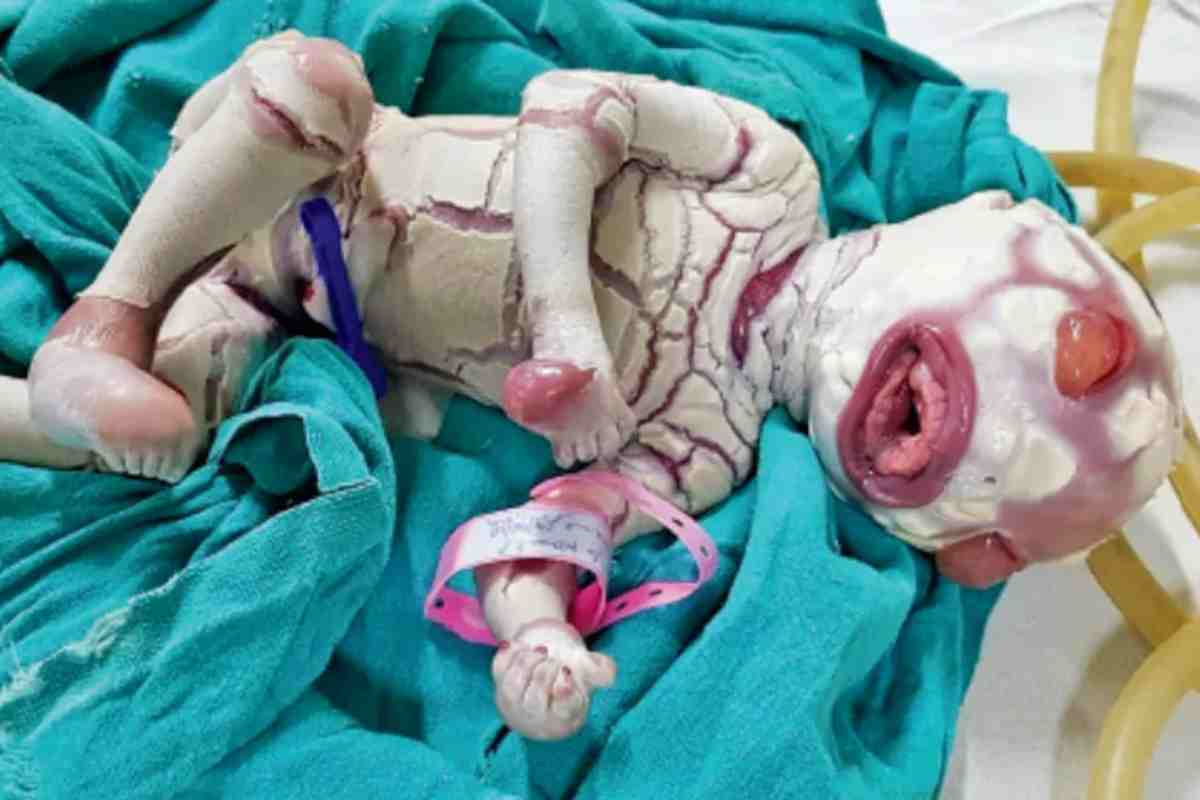Harlequin Type Ichthyosis Facts

Harlequin Ichthyosis is a kind of hereditary skin disorder that has the characteristic of cracking and thickening of the person’s skin. Happens congenitally in infants and it is a rare form of the disease condition. Aside from that, it has the characteristic of diamond and reddish shape scales.
Sometimes they are described as having fish-like skin. The person who has Harlequin disease is known to have an abnormality in their epidermal metabolism or abnormality in their keratinization.
Symptoms of Harlequin Type Ichthyosis
Children who Harlequin disease are known to be present with contraction, which is abnormal in nature, of the mouth, ears, eyes, and other parts of the child’s body. Bleeding can be also common in them especially when they are born in this world. Their lips are known to have a medical term called Eclabium wherein their lips are in wide fixed grimaces.
Aside from that, the person also is present with deformities in their arms, fingers, and feet which lead to limitations in their movement such as bending. In addition to that, the child with Harlequin Ichthyosis also suffers from hypoplasia in their fingers as well as polydactyly condition which is a medical condition that is known to have numerous toes or fingers. Also, their eyelids are inverted and they have bound-down ears. Aside from the ones that were mentioned, the other symptoms include:
- Redness in their skin
- Edema
- Crusting of their skin
- Thicken epidermis
- Difficulty in breathing
- Alopecia
- Impairment of the regulation of the body temperature
- Excess in hair growth
- Dehydration
Treatment for Harlequin Type Ichthyosis
With the development of medical advancement bringing about technological benefits to the medical field, treatment for Harlequin Ichthyosis has been improved and is still improving as we speak. The treatment involves:
- Nutritional repletion
- Balancing the fluid and electrolyte level
- Environmental measures in decreasing the symptoms and risk of dehydration
- Oral retinoids
- Antiseptics
- Antibiotics
- Moisturizers
- Topical paraffin ointments
These are the common treatment given to children with Harlequin disease. At the child’s birth, he or she will be placed in the NICU or neonatal intensive care unit and given all the necessary gadgets such as a humid incubator, lubrication of the cornea, and the like. Aside from this, there is a need for support as the child battles this condition all throughout his or her life.
This kind of congenital skin disease will continue to persist all throughout the person’s life. Hence, there is a need for support, understanding, and unconditional love given to them aside from the medical treatment given. As such, there will be a reason why children will have to battle this condition all throughout their life span.
Also Read: Periodontal Disease Treatments